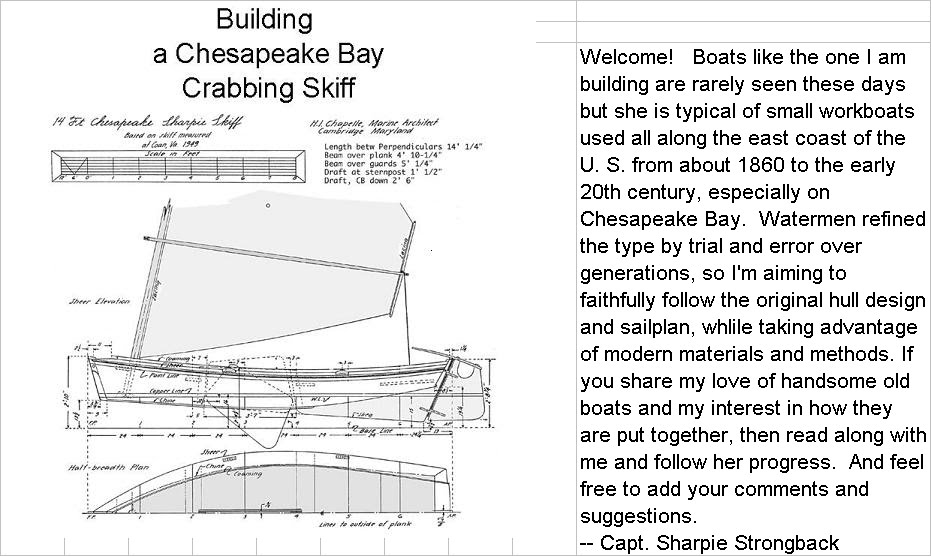I marked the coaming pieces to trim the aft ends to mate up neatly with the transom frame. The starboard coaming hadn't been trimmed to width at all, so I marked it to the designed 4 1/2". After cutting, I sanded the top and bottom edges and rounded them with the router. Because the laminated coaming pieces now have a permanent bend, running it past the router wasn't all that easy. To get them uniformly smooth and round, I followed up with hand sanding. As I was finishing that job, disaster struck. The starboard coaming broke in half at the point of one of the scarphs. I guess there was too much strain on it as I handled it for routing and sanding. As Mozart said when his father died, you can imagine how upsetting that was. Actually I think I grieved for the coaming more. I've put a lot of work into the coaming pieces, and material for a new one would be costly. Here's the plan: when I am ready to finally glue and screw the coaming, I'll see whether the starboard side makes a fair curve if I just epoxy the two pieces together and screw them to the frames. The break is a couple of inches from where the coaming meets a frame, so it will not be easy to put a butt block behind the pieces to support them. We'll just have to see. Worst case, I pay up for new material and use the broken pieces for a pattern, but I hope it doesn't come to that.
The original plans assume the deck is built of 3/4" planks, but my deck is plywood. It's only 6mm (a scant 1/4") thick. It is supported by the sheer clamp on the outside and by frames every 12". But I'm concerned that even though it will be fiberglassed and bonded to the coaming, there is no other support for the deck on the inside edge. So today I made enough blocks about 5" long to screw to the deck and coaming between each frame. Probably unnecessary, but I'd rather have it extra strong. After the deck and coaming are glued and screwed in, I'll also glue and screw the supporting blocks.
The plans specify a 1/2" pin driven through the mast thwart to cleat the halyard. I'll also lead the snotter to the thwart, so I need two such pins. I don't know if the designer meant the pins to be wood or metal, but 1/2" looks puny for wood, so I made 5/8" belaying pins, drilled holes for them in the thwart, and drove them in place. It's a tight fit, so they'll stay in place secured by only the normal sealing and paint. I may add similar belaying pins in the aft rowing thwart, just inside the frames so they won't get in the way. Those could be used to cleat the mainsheet or just snub it. As you can see, there was just enough room for the belaying pins between the mast and the mast clamp bolts.
Next up: apply a penetrating sealer to all these otherwise unprotected pieces I've made, in preparation for painting the inside of the boat.
I've started to look into getting a Federal Hull Identificaiton Number for the boat. Apparently it is a federal requirement for every boat, but administered by the State of Florida, which assigns a number when the boat is first registered. The problem is that registration is not required in Florida for an unpowered boat under 16' in Florida, so I'm not sure whom to call. If I register it in Florida anyway it will cost about $30 per year. Early this year, I registered our canoe in Minnesota in order to paddle the Boundary Waters, and an unpowered boat there only costs $25 for a three year registration. I could also register this boat in Minnesota if I wanted to register it at all, but for that I would need a hull ID #. The reason I'm inclined to battle with the red tape is that without a hull ID# it may difficult for anyone to ever sell the boat because it it can't be shown not to be stolen. I just hope I don't have to come up with receipts for what I've spent building the boat. I don't have them and I don't want to know.


Register once, get hull ID#, do not renew registration.
ReplyDeleteThanks. I believe that's the same anonymous who told me when I dunked my Blackberry to quit snivelling and buy a new one. I can count on him to remind me when a solution is obvous.
ReplyDelete